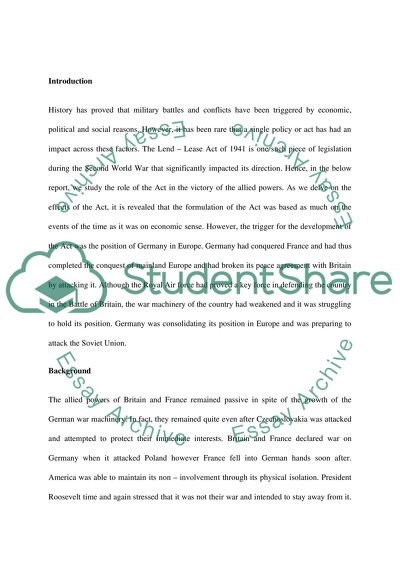Cite this document
(“Assess the role of Lend-lease in securing Allied victory Essay”, n.d.)
Retrieved from https://studentshare.org/environmental-studies/1411188-assess-the-role-of-lend-lease-in-securing-allied
Retrieved from https://studentshare.org/environmental-studies/1411188-assess-the-role-of-lend-lease-in-securing-allied
(Assess the Role of Lend-Lease in Securing Allied Victory Essay)
https://studentshare.org/environmental-studies/1411188-assess-the-role-of-lend-lease-in-securing-allied.
https://studentshare.org/environmental-studies/1411188-assess-the-role-of-lend-lease-in-securing-allied.
“Assess the Role of Lend-Lease in Securing Allied Victory Essay”, n.d. https://studentshare.org/environmental-studies/1411188-assess-the-role-of-lend-lease-in-securing-allied.


